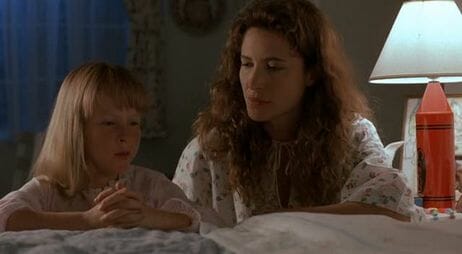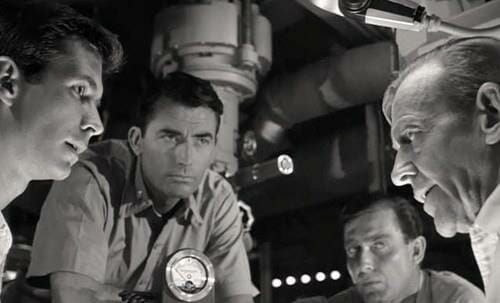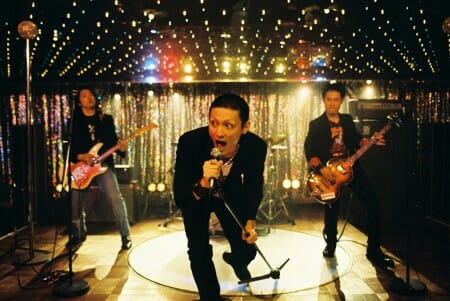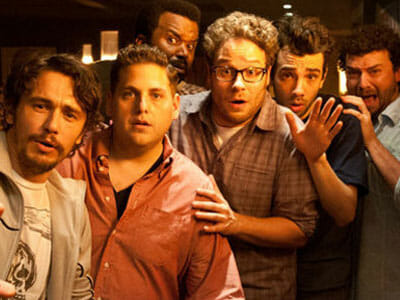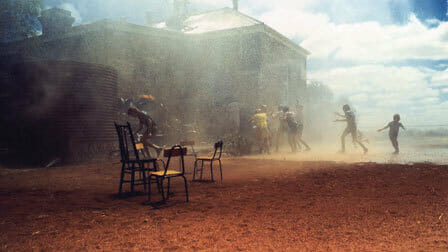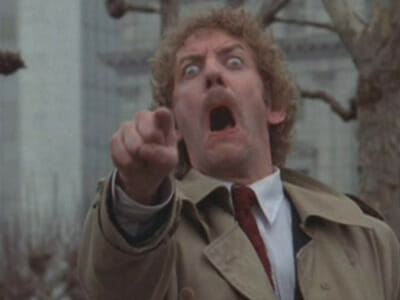
“This is the way the world ends: not with a bang but a whimper.”
Then again, what does T.S. Eliot know? As far as the movies go, the possibilities for destroying our planet or civilizations are downright infinite. Certainly, in light of several recent predictions claiming that the end of the world is ‘nigh (most of which have passed, mind you), the apocalypse has naturally been on a lot of peoples’ minds.
And so it goes: What’s prevalent in society’s consciousness is subsequently reflected in our pop culture. This means a surge of movies dealing with a world-ending event. Dramatic or funny; action-packed and exciting or slow and deliberate; real life or supernatural—there’s an apocalypse story for everyone.
20. Seeking a Friend for the End of the World (2012)
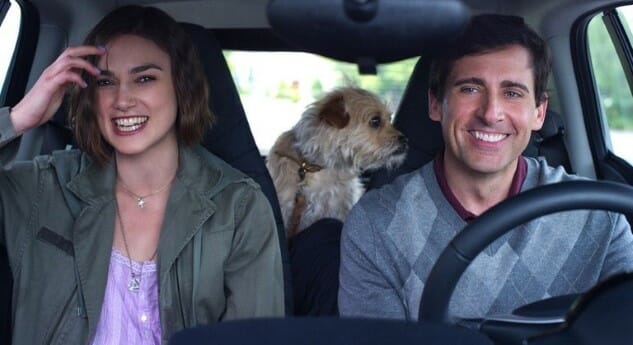
Released in mid-summer of 2012, director Lorene Scafaria’s (Nick and Norah’s Infinite Playlist) feature film directorial debut came and went without much fanfare. To be fair, it was a hard sell. An apocalypse comedy/rom-com/road trip movie starring the likes of Steve Carell and Keira Knightley, two actors who don’t seem like they belong in the same world together let alone in a romantic pairing, the movie was never going to be a runaway hit. It’s certainly not without its flaws, with a tone that oscillates sharply between comedy and drama and a plotline that borrows heavily from a certain other movie on this list. And yet, Carell and Knightley’s combined charm and chemistry make this one end-of-the-world road trip worth checking out.
19. War of the Worlds (2005)

Director Bryon Haskin’s 1953 adaptation of H.G. Wells’ classic novel remains one of the most notable science fiction films of the 1950s. Today, the film stands as an essential, if somewhat dated, milestone in the evolution of special effects. In other words, unlike certain other properties, a remake was not out of the question. And who better to do so than Steven Spielberg?
The power of Spielberg’s 2005 version is how he repurposes the original’s pervading Cold War paranoia in favor of incorporating elements of post-9/11 trauma. When the Tom Cruise character, having narrowly escaped the initial alien attack, looks into the mirror and realizes he’s covered in the ashes of disintegrated civilians, it’s next to impossible not to summon up the image of debris-covered New Yorkers wandering around the aftermath of the Trade Center attack. Moreover, by sticking closer to the book’s original premise, which involved a man’s attempt to locate his wife in the ensuing chaos, Spielberg creates a disaster film that feels much more intimate and personal than the ‘50s version. Yes, the film kind of falls apart in the final reel, but by that point it’s earned more than enough goodwill to balance out the weaker areas.
18. The Rapture (1992)
Mimi Rogers plays Sharon, a Los Angeles hedonist who ends up falling in with a religious sect obsessed with the End of Times. The group warns that the biblical Rapture is near and Sharon takes the news to heart, vowing to give her life to God and live a purer lifestyle. She eventually even marries and has a daughter. As the signs of the Rapture begin appearing, however, Sharon also begins to doubt her devotion to God and his “cruel” ways. Made on a miniscule budget, the film did little business during its initial run, despite ringing endorsements from the likes of Roger Ebert. It’s not hard to see why thanks to its ham-fisted diatribe against traditional religious views of God. While such a heavy-handed approach certainly bogs the story down in parts, the film is worth seeing for Rogers’ fantastic performance alone as well as the sheer bravery of story’s final 15 minutes.
17. On the Beach (1959)
Given the content restrictions enforced on films in the pre-MPAA age, you’d think it would be next to impossible to release a film containing the kind of visceral impact as a more modern production. And well…you’d sort of be right. Leave it to Stanley Kramer then—director of such issue-heavy projects like Guess Who’s Coming to Dinner and Inherit the Wind—to deliver a moving ensemble drama about a group of characters in denial about their eventual destruction. Set months following a devastating World War III, the film posits a world in which most of the Northern Hemisphere has been contaminated with radiation poisoning and people are moving down to Australia in order to escape the slow-moving but ever encroaching radiation dust. Boasting a cast that includes Gregory Peck, Ava Gardner, Anthony Perkins and Fred Astaire, On the Beach is a must-see for any classic-film fans.
16. Time of the Wolf (2003)
Austrian director Michael Haneke isn’t exactly known for playing it safe; rather, he seems to prefer pushing the boundaries of good taste, as if daring anyone to keep watching. This is certainly the case with his 2003 apocalyptic film Time of the Wolf. Haneke regular Isabelle Huppert plays the matriarch of a French family who travels to their home in the country only to find that an unspecified disaster has driven the world into chaos. When the family tries to find new shelter, however, they are shunned or ignored like lepers in biblical times. Here, by never revealing the cause of the apocalypse, Haneke almost seems to be making a statement not about the nature of man in times of peril but about how fragile human relationships can be and how little it takes to suck the compassion out of people. While not nearly as powerful as some of Haneke’s other works, Time of the Wolf stands as a fantastic alternative to the typical end-of-the-world fare.
15. Fish Story (2009)
There’s one scene in Almost Famous where rocker Jeff Bebe, high on his own self-importance, utters the soundbite-y phrase “rock ’n’ roll can save the world.” Never has these words been more literalized than in Yoshihiro Nakamura’s 2009 film Fish Story. The film opens on the deserted streets of Japan. Everyone is prepping for the seemingly inevitable asteroid collision that will wipe away civilization as we know it. In a still-open record shop in the middle of the city, however, a music fan holds up hope that an obscure punk single from 1975 will save the world. And, in a series of seemingly unrelated stories that trace the song’s history over the years, we see how it does just that. Relentlessly clever and fun, Fish Story manages to tackle the concept of a “hyperlink” story without any of the pretentiousness or overindulges that typically plagues projects of that ilk.
14. Miracle Mile (1988)
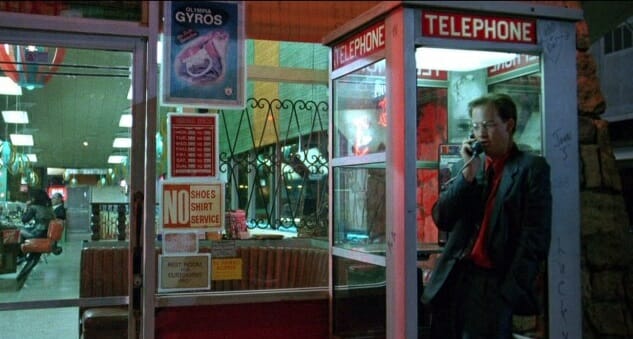
It’s a piece of irony worthy of Alanis Morissette (in that it’s not exactly ironic). You find the partner of your dreams, only to discover after the initial “meet-cute” that the world will soon be engulfed in a nuclear apocalypse. Anthony Edwards stars in this highly underrated late 1980s thriller as Harry, a lovelorn man who just happens to answer a random ringing pay phone late at night. On the other end of the line, a frantic man warns him that nuclear war is set to break out in exactly 70 minutes. What follows is Harry’s race against the clock to find his newfound love and escape in a helicopter before it’s too late. Shot mostly in real-time, Miracle Mile is a exhilarating roller coaster ride through late-night Los Angeles and a seemingly huge inspiration for the 2008 movie Cloverfield.
13. This is The End (2013)
The Book of Revelation as seen through the eyes of a group of stoned prima donnas, This Is The End has Seth Rogen and company staring down the apocalypse and lobbing dick jokes in reply. There are many ways in which Rogen and co-writer/director Evan Goldberg’s feature-directing debut could have gone horribly wrong, whether it be leaning too much on the inside jokes or half-assing the special effects. Yet, Rogen and Goldberg avoid all the major pratfalls of first-time comedy filmmakers, combining the loose, Apatow-inspired interactions with impressive visual set pieces that create a sense of scope and escalation. This is the End is probably one of the few apocalypse-based films you want to re-watch the second after its done.
12. Night of the Comet (1984)
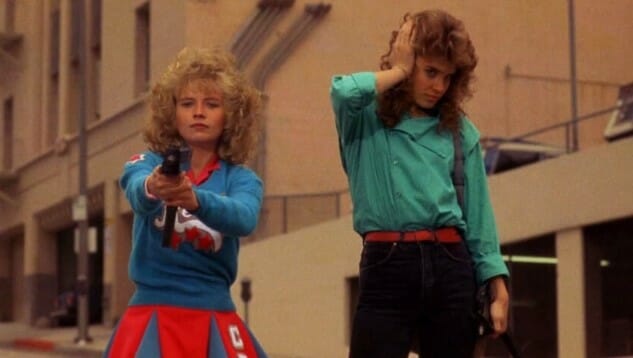
A forgotten little gem from the 1980s (recently released on Blu-Ray), Night of the Comet can easily be dismissed as nothing more than a goof of a film. Those with an open mind, however, will find an intriguing example of a film that mixed genres before such a thing was readily acceptable. The story centers on two teenage Valley Girls who, after a comet passes right near the Earth and vaporizes billions in its wake, decide to take advantage of the end-of-the-world situation by having an epic shopping spree. On the way, however, they encounter zombies, the military and countless other “totally lame” detours. A hilarious send-up of 1980s culture, Night of the Comet provides a thoroughly entertaining time capsule of the decade.
11. The Road (2009)
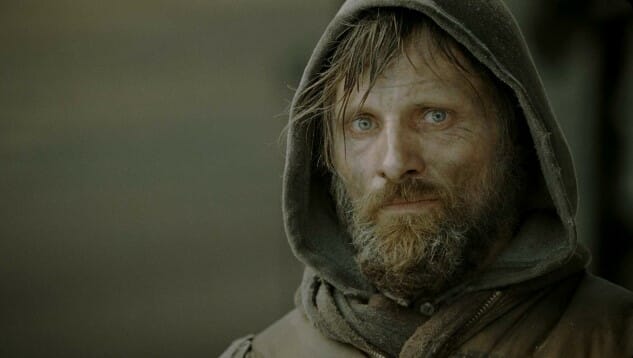
Adapted from the 2006, Pulitzer Prize-winning novel by Cormac McCarthy, The Road is an appropriately dark journey into the depths of human despair and desperation. Viggo Mortensen stars as an unnamed man making his way through the remnants of an eviscerated world with his young son in tow. Faced with a brutal population that’s quickly destroying itself, the man must eventually decide between continuing forward and hoping for a better life or executing his son then and there to prevent future suffering. Director John Hillcoat and writer Joe Penhall’s film is not an easy one to watch, but they deserve credit for transforming a beautifully effective novel into an equally effective piece of cinema.
10. The Day After (1983)
Few movies in 1983 inspired as much heated debate or produced a more visceral reaction in audiences than this two-hour, made-for-TV movie. The story centers on the citizens of Lawrence, Kansas and Kansas City, Missouri and how they unexpectedly find themselves dealing with the effects of a nuclear bomb. Hot off his work on Star Trek 2: Wrath of Khan, director Nicholas Meyer lobbied hard with the ABC censors to make the film as realistic as possible and the results speak for themselves. Calls flooded in to politicians’ offices across the country, with citizens who’d watched the film demanding to know if such a situation was possible. Children’s TV personality Mr. Rogers even did a series of shows to help placate the children traumatized by the film.
9. The Last Wave (1977)
Prior to breaking through with more mainstream fare such as The Year of Living Dangerously and Witness, Australian director Peter Weir made his name crafting atmospheric genre pictures like Picnic at Hanging Rock and The Last Wave. The latter finds future Thornbirds star Richard Chamberlain as a lawyer who accepts a job defending a group of Aboriginals. The group had apparently broken out into a fight during a freak storm and appeared to kill one of their own. As his investigation leads him deeper down the rabbit hole, the character discovers the coming signs of a cataclysmic event. Though not for all tastes, The Last Wave is a hypnotizing experiment in visuals and sound that make it an ideal thriller for an art-house crowd.
8. Invasion of the Body Snatchers (1978)
1978’s Invasion of the Body Snatches stands as perhaps the quietest apocalypse on this list. Here, it’s not war, nuclear holocaust or even a hostile invasion that threatens the end of humanity; instead, it’s a strange, plant-based species that quietly and effectively replaces the inhabitants of San Francisco with identical pod people. Director Phillip Kaufman’s re-imagining of Jack Finney’s novel Body Snatchers takes a decidedly darker, more cynical approach to the premise than the original 1956 film adaptation. In doing so, however, the film has established itself arguably as the most accomplished of the four Body Snatchers adaptations.
7. 28 Days Later (2002)/ 28 Weeks Later (2007)
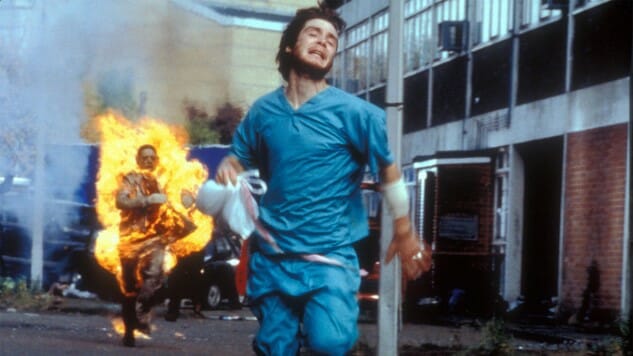
A bit off a cheat, but Danny Boyle’s 2002 alt-horror film and its 2007 follow-up work very much as a whole when it comes to maximum emotional impact. Introducing a world where a “rage” virus has turned the majority of the population into something approaching crazed, rabid dogs, 28 Days Later eventually settles on leaving its audience with a sense of hope for the future. 28 Weeks Later, however, negates this, depicting a world just as brutal as the first but with a far less optimistic ending.
6. 12 Monkeys (1995)

Inspired by the classic 1962 French short film La Jetée, 12 Monkeys went on to become the rare financial success in the notoriously disaster-prone career of former Monty Python member Terry Gilliam. Bruce Willis plays a mentally unstable convict from an apocalyptic future who is sent back in time to halt the release of a deadly virus that will kill billions. Featuring great performances from Willis and a decidedly un-glamorized Brad Pitt, 12 Monkeys bears that rare distinction of containing all the creative visuals and quirks that make Gilliam films great without the incoherent, scatter-brained plotting that often proves to be their downfall.
5. Dawn of the Dead (1978)
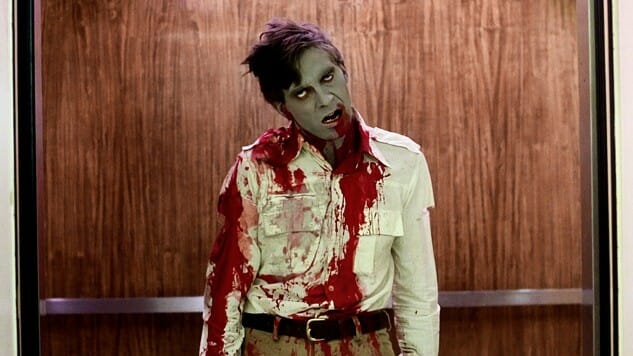
When it comes to “end-of-the-world-by-zombies” there’s no shortage of viable examples. Certainly old classics such as George A. Romero’s Night of the Living Dead and newer classics like Edgar Wright’s Shaun of the Dead have more than earned their place in the pantheon of great go-to films. Yet, Dawn of the Dead takes the lone spot for specific reasons. In both Night and Shaun the zombie threat is seen on a very small scale, with the action taking place in a rural house and a relatively small neighborhood respectively. Though most of its running time is confined to a massive shopping mall, Dawn’s first third effectively hits home the widespread nature of the zombie outbreak, with scenes like the apartment raid by an overzealous SWAT team visually establishing the reach of the outbreak. Furthermore, while humanity appears to be winning out or returning to normal in a good portion of zombie films, Dawn ends in a place of great ambiguity. Certain heroes survive, but how long can they survive in a world overrun by the undead with limited resources?
4. Melancholia (2011)
An end-of-the-world movie conceived by the director responsible for Breaking the Waves, Dancer in the Dark and Antichrist? Oh joy. All joking aside, Danish provocateur Lars von Trier here turns in a product that, while undoubtedly sad, is also disarmingly beautiful (emphasis on the opening, slow-motion sequence) and emotionally resonant without feeling overbearing. The movie even manages to squeeze in moments of genuine levity courtesy of Udo Kier as a hilariously snooty wedding planner. The film tells two different stories. In the first part, we follow a soon-to-be bride (Kirsten Dunst, in a career-defining performance) as she struggles to make it through the parties and celebration while her depression’s tight-hold on her grows stronger. The second part focuses on the exploits of her older, type-A sister (the great Charlotte Gainsbourg). There’s also the fact that a blue planet called Melancholia is fast approaching Earth’s orbit.
While far from subtle, von Trier’s use of an apocalyptic event as a metaphor for the nature of depression is an apt one. What’s more impressive is that, despite the movie’s dark subject matter, von Trier manages to infuse the apocalypse with a strange sense of hope.
3. Take Shelter (2011)
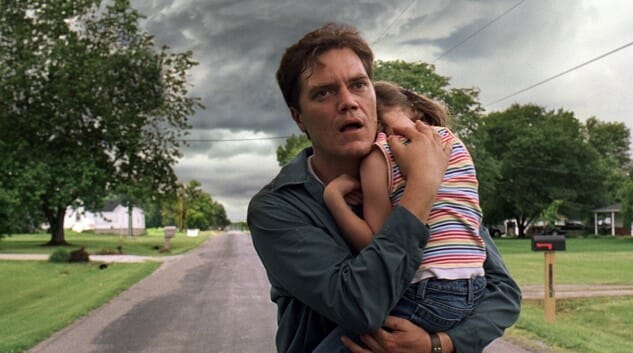
Curtis LaForche is a man plagued by apocalyptic visions. Convinced his premonitions will soon come to pass, he begins constructing a shelter for his wife and child. His increasingly erratic behavior leads him to a shrink, where we learn he has a family history of mental illness. Thus lies the central question of Take Shelter. Is Curtis a prophet for the modern time or a mentally disturbed individual becoming lost in his delusions? A kind of subversive take on the traditional Noah story, Take Shelter made good on the promises of writer/director Jeff Nichols’ first feature Shotgun Stories, establishing him as a powerful new voice in the film community. Not to mention, the film features Michael Shannon giving what may be his finest performance to date.
2. Last Night (1998)
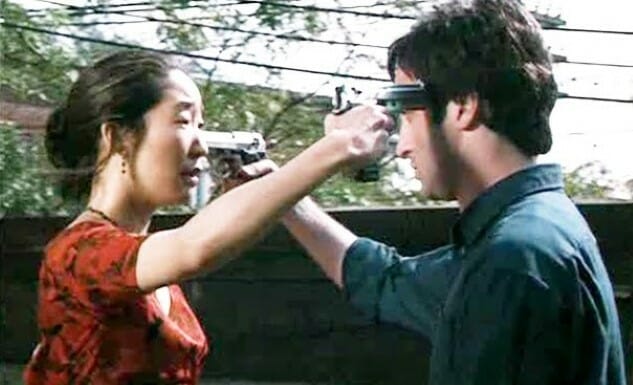
Last Night fades in on 6 p.m. of what we soon discover will be the last day before the complete obliteration of the planet (a specific reason is never given though the film does draw attention to the fact that night has not existed for some time). In six hours’ time, the world as we know it will be gone. Written and directed by Canadian actor/filmmaker Don McKellar, the film hops between several loosely interlocked stories, exploring how different people chose to spend their last night. Stranded on the street after her car is stolen and demolished, Sandra (Sandra Oh) tries desperately to get to her husband in time so that they can commit suicide together, recruiting a depressed loner named Patrick (McKellar) to help her out. Patrick’s friend Craig (Callum Keith Rennie) decides to spend the time recruiting women to enact all the sexual fantasies he’s ever had.
Sticking the perfect balance between sincere drama and laugh-out-loud comedy, Last Night builds to an incredible crescendo that will both haunt you and bring a sad smile to your face.
1. Dr. Strangelove, or How I Learned to Stop Worrying and Love the Bomb (1964)/ Fail-Safe (1965)

Inspired by the same source material and released within a year of each other, Dr. Strangelove and Fail-Safe provide an incredible side-by-side comparison for how the same plot can result in two widely different, though equally successful films. That being said, Strangelove, with its demented, ahead-of-its-time dark humor, will always be first in most people’s hearts. While attempting to adapt Peter George’s novel Red Alert for the big screen, director Stanley Kubrick found that he kept needing to cut out certain real-life details about the emergency nuclear bomb procedures because they were simply too absurd to work in a serious drama. Deciding to rewrite the project as a dark comedy, he recruited renowned satirist Terry Southern to help pen the script. From there, it’s all history. To this day, Peter Sellers’ three very different (and very funny) performances remain a feat by which few actors have matched (with possibly the exception of Alec Guinness in Kind Hearts and Coronets. Moreover, the image of Slim Pickens riding the bomb to its destination as well as the final montage of destruction set to the wistful “We’ll Meet Again” are the stuff of movie legend. Worldwide Armageddon has never been so hilarious.
Of course, at the same time, director Sidney Lumet was developing a more serious take on the “what if?” of nuclear war. Intimidated by the amount of talent involved in Fail-Safe, Kubrick filed a lawsuit asserting that the plotline had been plagiarized from George’s Red Alert, which Kubrick owned the rights to. The lawsuit was eventually settled but it had the desired effect. Kubrick’s movie came out eight months prior to Fail-Safe. It’s a shame because Fail-Safe is nearly as dramatically effective as Strangelove is laugh-out-loud hilarious. Henry Fonda and Walter Matthau are fantastic in their roles and Lumet’s camerawork and editing beautifully pounds home the escalating tension.
